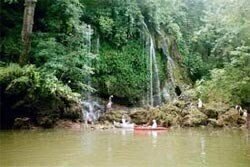Water/Wastewater
US Geological Survey Identifies Top Gulf \'Dead Zone\' Polluting Watersheds
Apr 20 2009
Government Must Focus Resources on High Priority Areas
For the first time, the U.S. Geological Survey has identified the top 150 polluting watersheds in the Mississippi River Basin that cause the annual 8,000 square-mile “Dead Zone” in the Gulf of Mexico. Based on the USGS report just released, members of the Mississippi River Water Quality Collaborative urge the Environmental Protection Agency, the U.S. Department of Agriculture, and state policy makers to use the report to solve water quality problems both within the states and downstream in the Gulf. In January 2008, USGS identified commercial fertilizers and animal manure from farmland in nine states as the cause of over 70 percent of the Dead Zone pollution. Evidence is mounting that the mandated push to increase corn production – one of the most fertilizer intensive crops – for ethanol exacerbates water quality problems within the states and in the Gulf. This year, the USGS identifies and ranks watersheds in the Basin by the amount of pollution that gets to the Gulf. “The USGS report reveals Kentucky’s lack of numeric nutrient criteria has made us one of the worst contributors of nitrogen and phosphorus pollution to the Gulf Dead Zone,” said Jason Flickner, Water Resources Program Director for Kentucky Waterways Alliance. “Nitrogen and phosphorus pollution is the third leading cause of impaired water quality in the state. We are literally choking the life out of Kentucky’s lakes and streams as well as downstream state’s waters and the Gulf of Mexico with our inaction. The Kentucky Division of Water should have adopted numeric nutrient criteria years ago to correct this embarrassment and should not delay any longer.” “Currently, federal Farm Bill conservation dollars are not targeted to where the pollution is generated. This new report should help states focus their pollution reduction efforts in the top ranked watersheds and on the most cost-effective practices,” said Michelle Perez, Senior Agriculture Analyst for the Environmental Working Group. “A targeted approach to farm conservation programs will help demonstrate to taxpayers that states are trying to use their resources wisely and get the biggest bang for the buck.” “This report demonstrates that pollution doesn’t respect state boundaries,” said Matt Rota, Water Resources Program Director for the Gulf Restoration Network. “Many of the top-polluting river and stream basins occupy multiple states. Downstream states like Louisiana and Mississippi are counting on a multi-state effort to address the Dead Zone. This study will hopefully help states and the U.S. Department of Agriculture to increase and target farm conservation funding to help reduce the Dead Zone, which is a major national environmental problem.” “States that have watersheds listed in this report now have a better sense of where action can be taken to reduce their contribution to the Dead Zone while also reducing pollution to their local waters, ” said Susan Heathcote, Water Program Director for the Iowa Environmental Council. “The Environmental Protection Agency needs to take the lead to focus federal resources to solve both local water quality problems and the national Dead Zone in the Gulf.”Events
IWA World Water Congress & Exhibition
Aug 11 2024 Toronto, Canada
Aug 25 2024 Stockholm, Sweden and online
Sep 03 2024 Mexico City, Mexico
Sep 03 2024 Mexico City, Mexico
Sep 03 2024 San Diego, CA, USA



..jpg)









